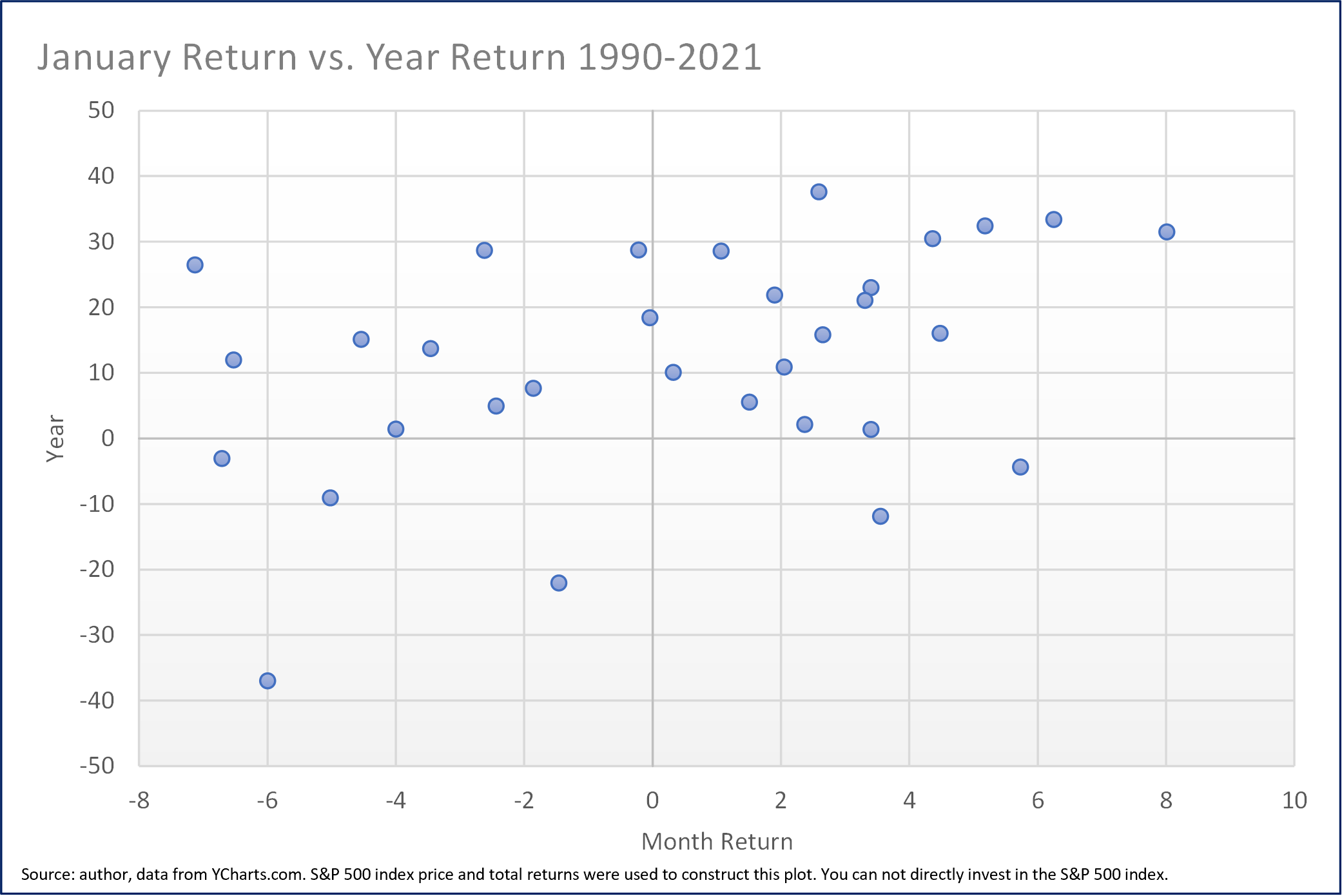There is a theory on Wall St. that says the performance of the stock market over the first five days of January, or its performance over the month, determines how the market will end the new year. Given the increased volatility we’ve seen this month, you might have heard about this from the talking heads in the media. But it’s not true. January’s stock market performance does not predict the future.
Let’s look at data for the S&P 500 index going back to 1990.
Five-day returns are poor predictors
I’ll start with the fallacy that the first five days have any bearing on the return for the year. The average return over the first five days of the month is 0.30%. The worst outcome was in 2016 when the S&P declined 5.9%, and the best outcome was in 1999 when it was up 3.8%. That’s a pretty wide dispersion of results. You will be happy to hear that the market finished 2016 up 11.9% and finished 1999 up more than 21%!
There have been ten years when the S&P had negative first 5-day returns. The average return over these ten occurrences is -2.5%. Only three of those went on to see a negative return for the year. The average yearly outcome was a positive 4.7%. Said another way, 70% of the time when there has been a negative return over the first five days of January, the market has gone on to finish the year in positive territory.
The S&P 500 finished the first week of 2022 down -1.87%.
January monthly returns are no better at predicting the future
The return for the whole month of January is equally bad at predicting the future. The average monthly return of January is similar to the 5-day value coming in at 0.32%. However, the range of outcomes is much broader. The worst January was down as much as 7.1%, while the best was up as much as 8%. January can be a volatile month for stocks.
There have been twelve occurrences when the monthly return was negative, but only three of those saw a negative return for the year. With a monthly average return of -3.5%, the year-end returns average more than 10%.
Interestingly, there have only been four years where the 5-day and January monthly returns were negative. One of those years finished in negative territory, which was the year 2000. The average year-end return for the other three was more than 10%.

What about following solid years?
A logical next question is to ask what happens after a year of solid performance? The data still does not provide any meaningful predictive insight.
There have been twelve years going back to 1990 in which the market finished up 20% or more. Only five of the following January’s saw a negative monthly return, but the average return for all twelve was slightly positive.
Finally, there have been four occurrences where there were three or more years of consecutive double-digit returns (1995-1997, 1996-1998, 1997-1999, 2019-2021), and only one of those periods saw a subsequent January monthly decline. Again, that was the year 2000. We’ll see how this January fares in just a few days.
January stock market returns are no indication of poor yearly returns.
I hope you can see by now that the returns of the stock market experienced over the first five days or over January do not portend a bad outcome for the year. Although there is a slightly positive relationship between the performance over the month and how the year unfolds, the association is weak at best. Most of the time, the market has gone on to higher highs.
We know that January is usually a pretty volatile period for stocks. I could make numerous arguments for why this is, but the reality is stock market returns can be extremely random – although skewed to the upside.
Just because January may have a negative return does not mean the year will. Don’t let the talking heads lead you to believe otherwise.
We recently published our 2022 Outlook in which we discuss our expectations for what is possible this year. If you found this article interesting, you might enjoy it too.
The S&P 500 index is an unmanaged group of securities generally considered representative of large U.S. publicly traded companies. The index is owned and compiled by Standard and Poors. Individuals cannot directly invest in unmanaged indexes.

